|
Are you stuck at a certain weight? Do you feel like your weight loss journey has plateaued? The body weight set point could be why.
The body weight set point theory is a fascinating concept that sheds light on the complex mechanisms that regulate our weight. According to this theory, the body has a natural weight range that it tries to maintain, and it can be difficult to lose weight beyond this range. The body weight set point is regulated by a part of the brain called the hypothalamus, which receives signals from the body and adjusts its output accordingly. One of the key hormones involved in the body weight set point is leptin, which is produced by fat cells and acts on the hypothalamus to reduce hunger and increase metabolism. When you try to lose weight, your body may resist by slowing down your metabolism and increasing your hunger levels. This is because your body is trying to maintain its set point and prevent you from losing too much weight too quickly. Unfortunately, this can sometimes lead to weight loss plateaus, where you stop losing weight even though you're still following your diet and exercise plan. This can be frustrating and demotivating, but it's important to remember that it's a natural part of the weight loss process. In addition to leptin, ghrelin and insulin are two other hormones that play a role in the body weight set point theory. Ghrelin is produced by the stomach and stimulates hunger. When you lose weight, your levels of ghrelin increase, which can make you feel hungrier and more likely to overeat. This can make it difficult to maintain weight loss and can contribute to the body's resistance to losing weight beyond its set point. Insulin is a hormone produced by the pancreas that helps regulate blood sugar levels. When you eat carbohydrates, your body releases insulin to help transport glucose into your cells for energy. However, when you consume too many carbohydrates or have insulin resistance, your body may produce too much insulin, which can lead to weight gain and difficulty losing weight. Both ghrelin and insulin can contribute to the body's resistance to losing weight beyond its set point. By managing your diet and lifestyle to help regulate these hormones, you can help reset your body's natural weight range and continue on your weight loss journey. To manage ghrelin levels, it's important to eat a balanced diet that includes protein, fiber, and healthy fats. These nutrients can help keep you feeling full and satisfied, which can help reduce hunger and prevent overeating. It's also important to avoid skipping meals or going too long without eating, as this can cause ghrelin levels to increase. To manage insulin levels, it's important to eat a balanced diet that includes complex carbohydrates, protein, and healthy fats. Avoiding processed foods and sugary drinks can also help regulate insulin levels. Exercise can also help improve insulin sensitivity, which can make it easier to lose weight and maintain a healthy weight. The body weight set point theory is part of the body's natural homeostasis, which is the process by which the body maintains a stable internal environment despite changes in the external environment. Homeostasis is essential for our survival, as it helps us maintain a stable body temperature, blood pressure, and other vital functions. The body weight set point is similar to a thermostat in that it regulates the body's weight in the same way that a thermostat regulates the temperature in a room. Just as a thermostat maintains a set temperature range, the body weight set point maintains a set weight range. When the temperature in a room gets too hot or too cold, the thermostat adjusts the heating or cooling system to bring the temperature back within the set range. Similarly, when the body's weight gets too high or too low, the body weight set point adjusts hunger and metabolism to bring the weight back within the set range. The body weight set point is thought to have evolved as a survival mechanism to help us maintain a healthy weight when food was scarce. In times of famine, the body would slow down metabolism and increase hunger to help us conserve energy and find food. However, in modern times, food is abundant and easily accessible, which can make it difficult to maintain a healthy weight. By understanding the body weight set point theory and how it is part of homeostasis, we can better understand why it can be difficult to lose weight and maintain a healthy weight. It's important to remember that the body weight set point is not a fixed number, and it can be influenced by factors such as diet, exercise, and lifestyle. By making healthy choices and implementing the strategies outlined above, we can help reset our body's natural weight range and achieve our weight loss goals. To break past a weight loss plateau, there are a few things you can try: 1. Change up your exercise routine: If you've been doing the same workout for a while, your body may have adapted to it. Try switching things up by trying a new type of exercise or increasing the intensity of your current routine. 2. Re-evaluate your diet: Are you still eating the same foods and portion sizes as when you started your weight loss journey? It may be time to re-evaluate your diet and make some changes to help jumpstart your weight loss again. 3. Get enough sleep: Lack of sleep can disrupt your hormones and make it harder to lose weight. Make sure you're getting enough sleep each night to help support your weight loss efforts. 4. Manage stress: Stress can also disrupt your hormones and make it harder to lose weight. Find ways to manage your stress, such as through meditation, slow breathing exercies, or other relaxation techniques. 5. Gradual weight loss: Rapid weight loss can trigger your body's starvation response and make it harder to lose weight in the long term. Aim for a gradual weight loss of 1-2 pounds per week to help avoid this. 6. Strength training: Building muscle can help increase your metabolism and make it easier to maintain weight loss. Incorporate strength training into your exercise routine to help build muscle and burn more calories. 7. Mindful eating: Paying attention to your hunger and fullness cues can help you avoid overeating and maintain a healthy weight. Practice mindful eating by eating slowly, savoring your food, and stopping when you feel satisfied, rather than when you're stuffed. In conclusion, the body weight set point theory is a complex and fascinating concept that sheds light on the mechanisms that regulate our weight. By understanding how the body weight set point works and implementing healthy lifestyle changes, we can help reset our body's natural weight range and achieve our weight loss goals. Remember that weight loss plateaus are a natural part of the weight loss process, and there are strategies you can use to break past them and continue on your weight loss journey. With patience, persistence, and a healthy lifestyle, you can achieve your weight loss goals and maintain a healthy weight for life.
1 Comment
Sleep apnea is a sleep disorder that occurs when your breathing repeatedly stops and starts during sleep. This can happen hundreds of times a night, and it can disrupt your sleep. Sleep apnea can cause a number of health problems, including:
There are a number of things you can do to lose weight if you have sleep apnea. These include:
Here are some additional tips for losing weight if you have sleep apnea:
We specialize in offering Lifestyle Intervention programs that help with both Sleep Apnea and weight loss. Begin the conversation by completing our online health assessment. Total Daily Energy Expenditure (TDEE) is the total amount of energy that our body burns in a day, including all physical activities, digestion, and metabolism. It is an essential factor to consider when setting weight loss and body composition goals. Understanding TDEE can help us determine how many calories we need to consume to maintain, gain, or lose weight.
Calculating your TDEE is relatively simple. There are several online calculators such as one that we have on our Health Calculators page that can help you determine your TDEE based on your age, gender, height, weight, and activity level. However, it is essential to note that these calculators only provide an estimate, and your actual TDEE may vary based on individual factors such as genetics and metabolism. Once you have calculated your TDEE, you can use it to determine your daily calorie needs. If your goal is to lose weight, you will need to consume fewer calories than your TDEE, while if your goal is to gain weight, you will need to consume more calories than your TDEE. It is essential to note that a calorie deficit or surplus of 500-1000 calories per day is generally considered safe and effective for weight loss or gain. In addition to calorie intake, your TDEE can also help you determine how many calories you need to burn through exercise to achieve your goals. For example, if your TDEE is 2000 calories per day, and you want to lose one pound per week, you will need to create a calorie deficit of 3500 calories per week, or 500 calories per day. This deficit can be achieved through a combination of calorie restriction and exercise. TDEE is made up of four components: Basal Metabolic Rate (BMR), Thermic Effect of Feeding (TEF), Non-exercise activity thermogenesis (NEAT), and Thermic effect of activity (TEA). BMR is the amount of energy that our body burns at rest to maintain basic functions such as breathing, circulation, and organ function. This is the amount of calories utilized to simply function without eating or movement. It accounts for about 60-70% of our TDEE. It is very difficult to measure BMR so Resting Metabolic Rate (RMR) is often used. RMR is similar to BMR but is measured under less strict conditions, RMR is slightly higher than BMR due to the thermic effect of food. The best way to improve your BMR and RMR is through strength training, as muscle mass increases our metabolic rate. Cryotherapy has also been known to help increase metabolic rates. We are happy to offer Resting Metabolic rate testing as one of our services. TEF is the energy that our body uses to digest, absorb, and metabolize food. It accounts for about 10% of our TDEE. Protein has the highest thermic effect, followed by carbohydrates and fats. NEAT is the energy that we expend during non-exercise activities such as fidgeting, walking, and standing. It accounts for about 15-20% of our TDEE. Increasing NEAT can be an effective way to burn more calories throughout the day. TEA is the energy that we expend during exercise and physical activity. It accounts for about 10-15% of our TDEE. Increasing TEA can be an effective way to burn more calories and improve overall health. To enhance each component of TDEE for weight loss, we can make small changes to our daily routine. For example, increasing protein intake can increase the thermic effect of feeding. Taking frequent breaks to stand and stretch can increase NEAT. Incorporating strength training and high-intensity interval training (HIIT) can increase TEA. Changing our Body Composition can increase BMR. In conclusion, understanding TDEE is crucial for setting weight loss and body composition goals. By breaking down each component of TDEE and making small changes to our daily routine, we can enhance our TDEE and achieve our desired results. Remember, weight loss is not just about reducing calories, but also about increasing energy expenditure through a combination of diet and exercise. By focusing on TDEE, we can create a sustainable and effective weight loss plan that promotes overall health and well-being. It is important to note that while TDEE is a useful tool for nutrition and exercise planning, it is not the only factor to consider. Other factors, such as macronutrient ratios, meal timing, and exercise intensity, can also impact your weight and body composition goals. It is important to consult with a healthcare professional to determine an appropriate calorie intake and exercise plan based on individual needs and goals. A healthy mindset is crucial for creating a healthy body. It's not just about what you eat or how much you exercise - it's about the habits and goals you set for yourself, and the way you talk to yourself about your health and wellness.
One of the most important aspects of a healthy mindset is setting positive habits and goals. This means focusing on what you can do, rather than what you can't. For example, instead of saying "I can't eat sugar," try saying "I choose to eat foods that nourish my body." This shift in mindset can help you feel more empowered and motivated to make healthy choices. Another key aspect of a healthy mindset is avoiding negative self-talk. It's easy to get caught up in thoughts like "I'm not good enough" or "I'll never be able to lose weight," but these thoughts can be damaging to your mental and physical health. Instead, try to focus on positive affirmations and self-talk. For example, instead of saying "I hate my body," try saying "I am grateful for my body and all that it does for me." So, how does a healthy mindset create health? Well, for starters, it can help you stay motivated and committed to your health goals. When you have a positive mindset, you're more likely to stick to healthy habits like eating well and exercising regularly. This can lead to improved physical health, including weight loss, improved cardiovascular health, and better blood sugar control. A healthy mindset can also help you manage stress and improve your mental health. When you're able to approach challenges with a positive attitude, you're less likely to feel overwhelmed or anxious. This can lead to improved mental health outcomes, including reduced symptoms of depression and anxiety. In conclusion, a healthy mindset is crucial for creating a healthy body. By setting positive habits and goals, avoiding negative self-talk, and focusing on the things you can do to improve your health, you can create a mindset that supports your overall wellness. So, the next time you're struggling to make healthy choices, remember that a healthy mindset is just as important as a healthy diet and exercise routine. Heart rate variability (HRV) is an important metric for understanding your body's response to stress and recovery. HRV refers to the variation in time between each heartbeat, and is influenced by a variety of factors including physical activity, sleep, and stress. By tracking your HRV, you can gain insights into your body's autonomic nervous system and overall health and well-being. For example, a high HRV is generally associated with better cardiovascular system and health, while a low HRV can be a sign of stress or overtraining. There's not a normal HRV for men, women or even by age group. HRV is a unique individual metric that varies from one person to the next. You should only compare your HRV to your own value over time to gain a sense of what's a normal value for you. To improve your HRV, there are a few key strategies you can implement. These include getting enough sleep, managing stress, and engaging in regular physical activity. It's also important to fuel your body with healthy foods and stay hydrated. In addition to these lifestyle factors, there are also specific techniques you can use to improve your HRV. These include breathing exercises and meditation. These practices have been shown to reduce stress and improve overall health, which can lead to improved HRV. Stress is a common problem that affects many people, and it can have a significant impact on our health and well-being. However, by using heart rate variability (HRV) biofeedback, we can learn to manage stress and improve our overall health. When we are stressed, our HRV decreases, and our body's ability to adapt to stress is reduced. By using HRV biofeedback, we can learn to increase our HRV and improve our body's ability to adapt to stress. HRV biofeedback involves using a device to measure your HRV and provide feedback on your breathing and heart rate. By practicing slow, deep breathing, you can increase your HRV and reduce stress. HRV biofeedback has been found to be effective in reducing stress and anxiety, improving sleep quality, and enhancing overall well-being. One way to track your HRV biofeedback is through wearable technology such as the WHOOP Strap, Oura ring or Oxa Life device. You will also need to find a quiet, comfortable place to practice, free from distractions. Once you have your device and a quiet space, you can begin practicing HRV biofeedback. To start, sit comfortably and with your device in place. Take a few slow deep breaths through your nose and focus on your breathing. Slowly inhale and exhale through your nose. As you exhale, imagine that you are releasing stress and tension from your body. Continue breathing slowly and deeply for several minutes, focusing on your breath and your heart rate. The Oxa offers great visualization of your breath, Heart rate and HRV in real time. The Oxa life sensor connects to a smart textile shirt, bra or chest band.
As you practice HRV biofeedback, you may notice that your HRV increases, and you feel more relaxed and calm. With regular practice, you can improve your body's ability to adapt to stress and reduce the negative effects of stress on your health and well-being. In conclusion, stress is a common problem that affects many people, but by using HRV biofeedback, we can learn to manage stress and improve our overall health. HRV biofeedback involves using a device to measure your HRV and provide feedback on your breathing and heart rate. By practicing slow, deep breathing, you can increase your HRV and reduce stress. With regular practice, you can improve your body's ability to adapt to stress and enjoy the many benefits of improved health and well-being. So, whether you're an athlete looking to improve your performance or simply looking to improve your overall health, consider incorporating HRV tracking and improvement strategies into your routine. Breathing is essential for life, but many people breathe incorrectly, leading to various health problems. Over-breathing and oral breathing can cause snoring, sleep apnea, dental problems, and asthma. Breathing re-education is important to eliminate dysfunctional breathing and return to functional diaphragmatic breathing. Buteyko breathing is a breathing technique developed by Konstantin Buteyko, a Russian doctor in the 1950s. The technique is based on the idea that many people breathe too much, which can lead to a variety of health problems. The Buteyko breathing technique involves slowing down your breathing and taking smaller, shallower breaths through the nose to maintain a normal level of carbon dioxide in your body, which can improve your overall health. Practicing the Buteyko breathing technique can improve your breathing and provide the benefits of functional diaphragmatic breathing.  Dr. Konstantin Buteyko Nasal breathing is important for good health. Breathing through your nose filters, warms, and adds moisture to the air, and helps regulate the amount of air you breathe. Mouth breathing, on the other hand, can lead to a variety of health problems, including snoring, sleep apnea, and dental problems. A study published in the Journal of Clinical Sleep Medicine found that nasal breathing can help reduce the symptoms of sleep apnea (Camacho et al., 2015). The Buteyko breathing technique has been found effective in treating a variety of conditions, including sleep apnea, insomnia, anxiety, and panic attacks. A study published in the Journal of Sleep Research found that Buteyko breathing can improve sleep quality in people with obstructive sleep apnea (Lindholm et al., 2013). Another study published in the Journal of Physiological Anthropology and Applied Human Science found that Buteyko breathing can reduce stress and improve sleep quality (Koike et al., 2003). A study published in the Journal of Alternative and Complementary Medicine found that Buteyko breathing can reduce anxiety and improve quality of life (Bowen et al., 2010). Buteyko breathing has also been found effective in treating asthma. A study published in the Journal of Asthma found that Buteyko breathing can reduce the symptoms of asthma and improve lung function (Cooper et al., 2003). Proper breathing techniques can significantly impact health and well-being. Practicing techniques like Buteyko breathing and nasal breathing can improve your breathing and reduce the risk of developing health problems associated with chronic over-breathing and oral breathing. If you are interested in learning more about these techniques, consider seeking out a qualified practitioner or attending a workshop or course. We are proud to be certified by The Buteyko Clinic International and Patrick McKeown to instruct people on how to practice the technique. We will soon be offering courses both in person and online for individuals and groups. Always consult with your healthcare provider before starting any new breathing techniques, especially if you have underlying health conditions. In conclusion, breathing is fundamental to our lives, and it is essential to ensure that we are breathing correctly. Over-breathing and oral breathing can lead to various health problems, including snoring, sleep apnea, dental problems, and asthma. However, practicing proper breathing techniques like Buteyko breathing and nasal breathing can improve our breathing and reduce the risk of developing these health problems. With the right guidance and practice, you can improve your breathing and enjoy the benefits of functional diaphragmatic breathing. Incorporating proper breathing techniques into your daily routine can improve your overall health and well-being, leading to a happier and healthier life. So, close your mouth, take a deep breath, slow down your breathing, and start reaping the benefits of proper breathing today!
References: - Lindholm et al. (2013). The effect of the Buteyko breathing technique on sleep quality in patients with obstructive sleep apnea syndrome: a randomized controlled trial. Journal of Sleep Research, 22(6), 680-685. - Koike et al. (2003). Breathing exercises for psycho-physiological relaxation: a systematic review. Journal of Physiological Anthropology and Applied Human Science, 22(3), 135-140. - Bowen et al. (2010). Breathing retraining and quality of life in subjects with asthma: a randomized controlled trial. Journal of Alternative and Complementary Medicine, 16(10), 1065-1073. - Cooper et al. (2003). Effect of two breathing exercises (Buteyko and pranayama) in asthma: a randomized controlled trial. Journal of Asthma, 40(6), 702-709. - Camacho et al. (2015). Myofunctional therapy to treat obstructive sleep apnea: a systematic review and meta-analysis. Journal of Clinical Sleep Medicine, 11(9), 1077-1085. Starting a health journey on the first of the month can be a powerful way to harness the energy of new beginnings and set yourself up for success. That's why I've decided to kickstart my health journey today on June 1st, with the goal of being the healthiest I have ever been by my 50th birthday on October 1st. I'm really happy that I lost over 75 lbs 6 years ago through our program. It absolutely changed my life and I am excited for the next chapter. How it startedHow its goingI have maintained the same weight for the last year and want to transition to ultra health. I'm currently 193 lbs with 20% body fat and a BMI of 28, I feel strong but could definitely increase my muscle mass. Below are some images from most recent Styku scan My GoalMy goal is to lose 15 lbs of fat and have a weight of 175, with a body fat percentage lower than 15%. I also want to be strong and fit enough to enjoy my active lifestyle, which includes hiking multiple 14ers, biking, kayaking, paddleboarding and other activities. I want to be in better physical shape at 50 than I was at 25. I also want to be confident in my physique at the beach or pool.
Over the next 120 days, I know that I will need to be disciplined in my nutrition and exercise habits, as well as my mindset. This means making healthy food choices, tracking my macros especially my protein, and staying within my calorie goals. It also means committing to a consistent exercise routine 6 days a week , including strength training and cardio. But perhaps most importantly, it means cultivating a positive and resilient mindset. I know that there will be days when I feel discouraged or unmotivated, but I am committed to pushing through those moments and staying focused on my goals. I will remind myself of why I started this journey in the first place, and the many benefits that come with being healthy and fit. To help me stay accountable and motivated, I will be tracking my progress in a daily journal and celebrating my successes along the way. I will also be seeking support from friends and family, and connecting with others who are on a similar journey. I'm sharing this journey with you because I want to be accountable. I know that if I share my goals with others, I'm more likely to stick with them. I'm also hoping to inspire others to start their own health journeys. If you're thinking about starting a health journey, I encourage you to go for it! It's never too late to make a change. Just remember to start small, be patient, and don't give up. You can do it! Here are some tips that have helped me so far:
|
AuthorDamian Solorzano is Health and Wellness Influencer, Respiratory Specialist and Health Coach who is passionate about optimizing personal health. Categories
All
Archives
March 2024
|


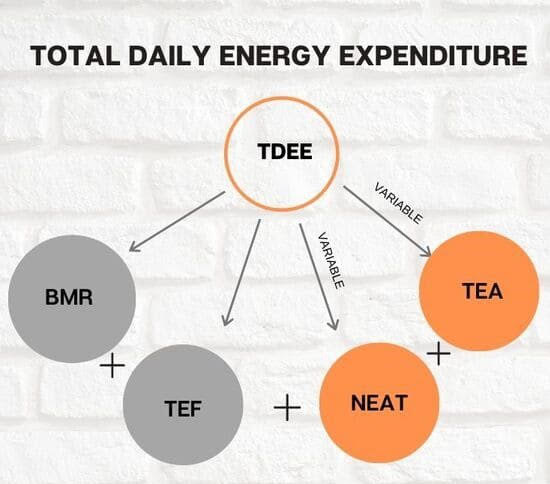
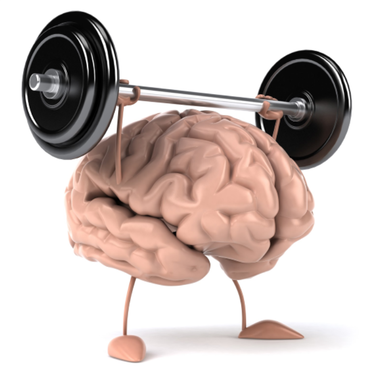
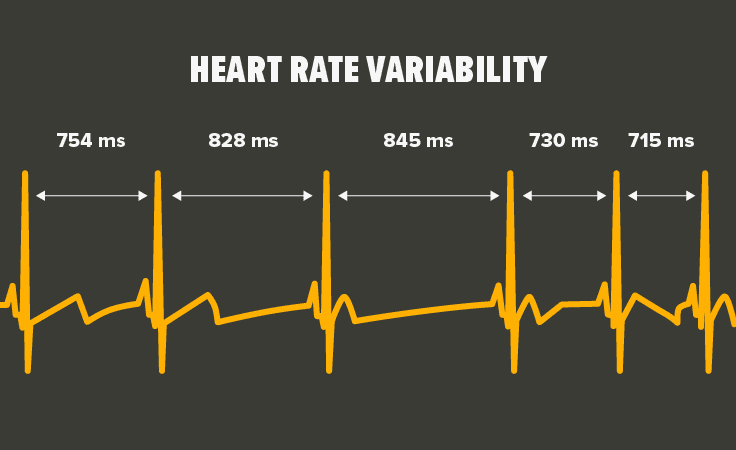



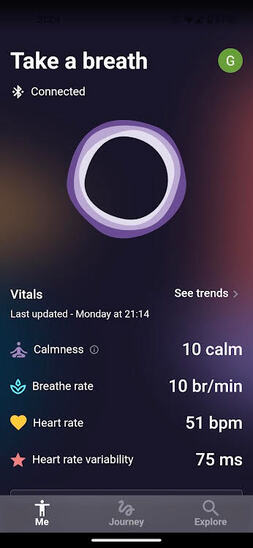

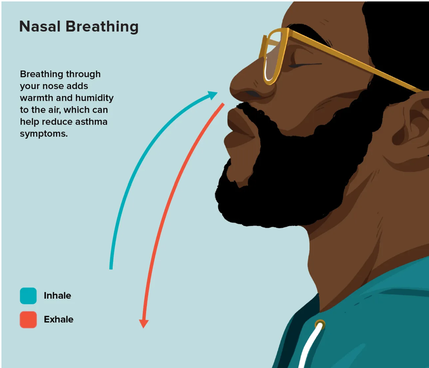


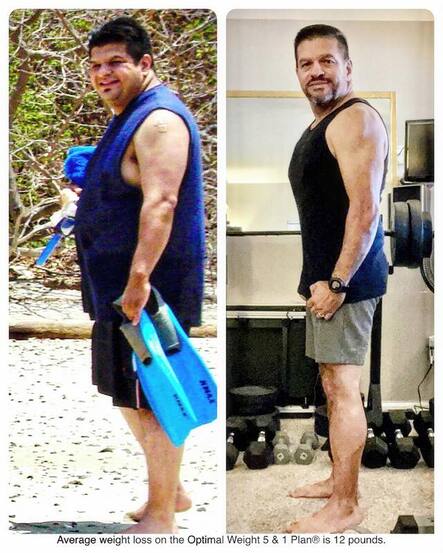
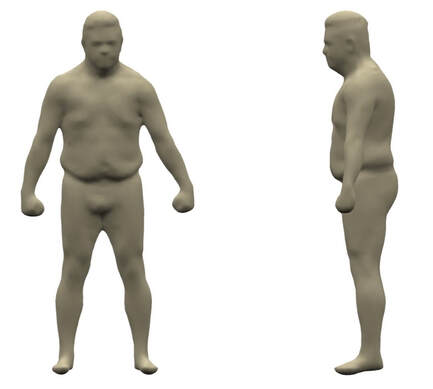
 RSS Feed
RSS Feed